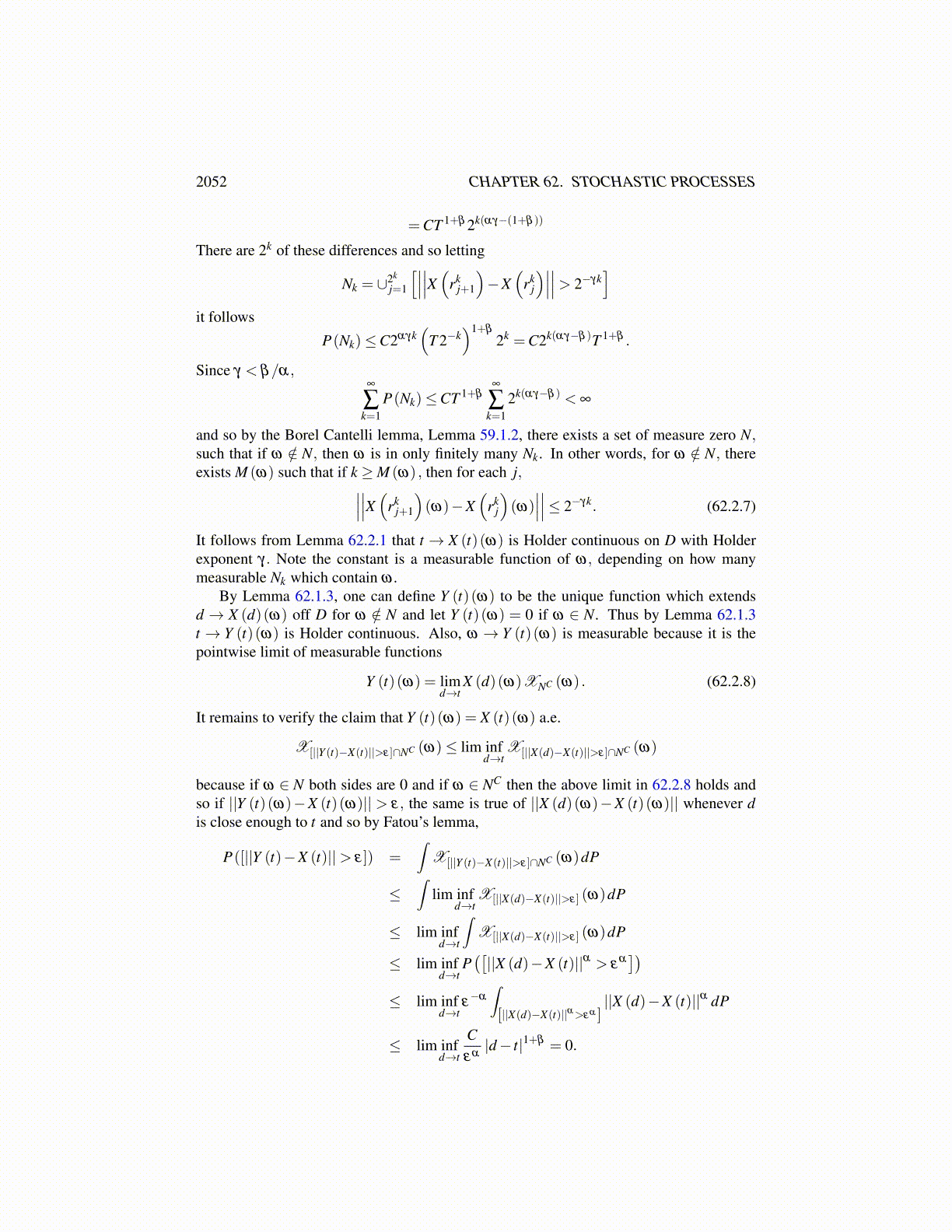
2052 CHAPTER 62. STOCHASTIC PROCESSES
for all k ≥M. Then if d,d′ ∈ Dm for m > n≥M such that |d−d′| ≤ T 2−n, then
∣∣∣∣X (d′)−X (d)∣∣∣∣≤ 2
m
∑j=n+1
2−γ j.
Also, there exists a constant C depending on M such that for all d,d′ ∈ D,∣∣∣∣X (d)−X(d′)∣∣∣∣≤C
∣∣d−d′∣∣γ .
Proof: Suppose d′ < d. Suppose first m = n+ 1. Then d = (k+1)T 2−(n+1) and d′ =kT 2−(n+1). Then from 62.2.3
∣∣∣∣X (d′)−X (d)∣∣∣∣≤ 2−γ(n+1) ≤ 2
n+1
∑j=n+1
2−γ j.
Suppose the claim is true for some m > n and let d,d′ ∈ Dm+1 with |d−d′| < T 2−n. Ifthere is no point of Dm between these, then d′,d are adjacent points either in Dm or inDm+1. Consequently,
∣∣∣∣X (d′)−X (d)∣∣∣∣≤ 2−γm < 2
m+1
∑j=n+1
2−γ j.
Assume therefore, there exist points of Dm between d′ and d. Let d′ ≤ d′1 ≤ d1 ≤ d whered1,d′1 are in Dm and d′1 is the smallest element of Dm which is at least as large as d′ andd1 is the largest element of Dm which is no larger than d. Then |d′−d′1| ≤ T 2−(m+1) and|d1−d| ≤ T 2−(m+1) while all of these points are in Dm+1 which contains Dm. Therefore,from 62.2.3 and induction, ∣∣∣∣X (d′)−X (d)
∣∣∣∣≤
∣∣∣∣X (d′)−X(d′1)∣∣∣∣+ ∣∣∣∣X (d′1)−X (d1)
∣∣∣∣+ ||X (d1)−X (d)||
≤ 2×2−γ(m+1)+2m
∑j=n+1
2−γ j = 2m+1
∑j=n+1
2−γ j
≤ 2
(2−γ(n+1)
1−2−γ
)=
(2T−γ
1−2−γ
)(T 2−(n+1)
)γ
(62.2.4)
It follows the above holds for any d,d′ ∈D such that |d−d′| ≤ T 2−n because they are bothin some Dm for m > n.
Consider the last claim. Let d,d′ ∈D, |d−d′| ≤ T 2−M. Then d,d′ are both in some Dmfor m > M. The number |d−d′| satisfies
T 2−(n+1) <∣∣d−d′
∣∣≤ T 2−n